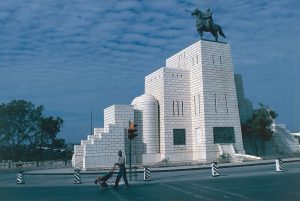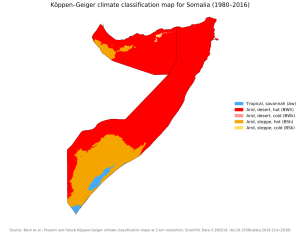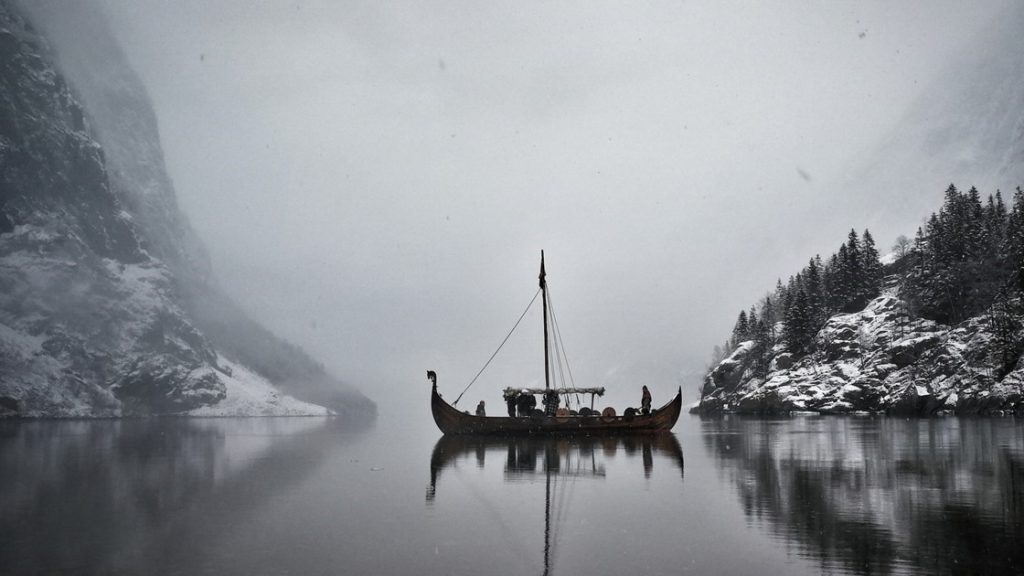History of Somalia

Somalia is a country located in the Horn of Africa with a rich history that dates back to ancient times. The country has been inhabited by various ethnic groups, including the Cushitic and Somali people, who are believed to have migrated to the area from the Red Sea region. According to Osman, the early history of Somalia is largely not documented, but it is believed that the region was an important center of trade and commerce, connecting the African continent to the Arabian Peninsula and the Indian Ocean (Osman, 2016).
The region that is now Somalia was ruled by various empires and kingdoms, including the Sultanate of Adal, which was established in the 15th century. The Sultanate of Adal was a Muslim state that dominated the Horn of Africa and was known for its military strength and trade relations with neighboring countries. The empire was eventually defeated by the Ethiopian Empire in the 16th century, leading to the decline of Muslim influence in the Horn of Africa (Osman, 2016).
During the colonial era, Somalia was divided into different territories controlled by various European powers, including the British, Italians, and French. The British controlled the northern part of Somalia, which became known as British Somaliland, while the Italians controlled the southern part of the country, which became known as Italian Somaliland. The French controlled the area that is now Djibouti, which was later incorporated into the country of Djibouti (Abdi, 2011).
In 1960, Somalia gained its independence from British and Italian colonial powers and became a unified nation. The country was ruled by a socialist government led by President Siad Barre, who came to power in 1969 through a military coup. Under Barre’s regime, the country experienced economic growth and social progress, but his authoritarian rule and suppression of political opposition led to civil unrest and eventually a civil war in the late 1980s (Abdi, 2011).
The civil war in Somalia lasted for over two decades and resulted in the collapse of the state and the emergence of various armed groups, including the Islamic militant group Al-Shabaab. The country has since been struggling to rebuild its infrastructure and establish a stable government. In recent years, Somalia has made some progress in stabilizing the country, with the help of the international community, but it still faces significant challenges, including political instability, poverty, and insecurity (BBC News, 2021).
Location of Somalia
Somalia is a country located in the Horn of Africa. The country is bordered by Djibouti to the northwest, Ethiopia to the west, Kenya to the southwest, the Gulf of Aden to the north, and the Indian Ocean to the east (CIA World Factbook, 2021). The country has a total area of 637,657 square kilometers, making it the 44th largest country in the world (CIA World Factbook, 2021).
The geography of Somalia is diverse, with the country consisting of plains, plateaus, and highlands. The northern part of the country is dominated by the Somali Plateau, which rises to an elevation of over 2,000 meters. The southern part of the country consists of lowlands and plains that gradually rise toward the Ethiopian Highlands (Encyclopaedia Britannica, 2021).
Somalia has a tropical climate, with temperatures ranging from 25 to 35 degrees Celsius throughout the year. The country experiences two rainy seasons, the Gu (April to June) and the Deyr (October to December), and two dry seasons, the Jilaal (January to March) and the Xagaa (July to September) (CIA World Factbook, 2021).
The location of Somalia has played a significant role in the country’s history, with the country’s position on the Horn of Africa making it an important center of trade and commerce throughout history. The country’s proximity to the Red Sea and the Indian Ocean has made it a strategic location for trade between Africa, Arabia, and India (Osman, 2016).

Climate of Somalia
Somalia has a tropical climate, with temperatures ranging from 25 to 35 degrees Celsius throughout the year. The country experiences two rainy seasons, the Gu (April to June) and the Deyr (October to December), and two dry seasons, the Jilaal (January to March) and the Xagaa (July to September) (CIA World Factbook, 2021).
The Gu season is the heaviest rainy season in Somalia, with the southern part of the country receiving up to 500 millimeters of rainfall, while the northern part receives up to 200 millimeters. The Deyr season is a shorter rainy season, with the southern part of the country receiving up to 200 millimeters of rainfall, while the northern part receives up to 100 millimeters (CIA World Factbook, 2021).
The Jilaal season is the first dry season in Somalia, characterized by strong winds and dust storms. The Xagaa season is the second dry season, with temperatures reaching their peak during this time. The Xagaa season is also known for its occasional droughts, which can have a significant impact on the country’s agricultural sector (CIA World Factbook, 2021).
The climate of Somalia is influenced by various factors, including the country’s location on the equator, its proximity to the Indian Ocean, and the monsoon winds. The monsoon winds bring moisture to the country during the rainy seasons, while the dry seasons are characterized by the dry Harmattan winds blowing from the Sahara Desert (Encyclopaedia Britannica, 2021).
The climate of Somalia has a significant impact on the country’s agriculture, which is the main source of livelihood for many Somalis. The rainy seasons are crucial for crop production, while the dry seasons are important for pastoralism, which involves the raising of livestock (Osman, 2016).

Languages of Somalia
Somalia is a multilingual country with a variety of languages spoken across the country. The official language of Somalia is Somali, which is spoken by the majority of the population. According to Ethnologue, Somali is a Cushitic language and is the mother tongue of over 15 million people in Somalia, Djibouti, Ethiopia, and Kenya (Lewis et al., 2015).
In addition to Somali, Arabic is also widely spoken in Somalia, especially in the northern region. Arabic is recognized as the second official language of Somalia and is used as a medium of instruction in Islamic schools and government documents (Mous & Abdi, 2012).
Another language spoken in Somalia is Maay, which is a dialect of the Somali language spoken in the southern region of Somalia, particularly in the Lower Jubba, Middle Jubba, and Gedo regions. Maay is considered a distinct language from Somali due to its unique phonology, morphology, and vocabulary (Abdulaziz, 2016).
Moreover, English and Italian are also spoken in Somalia, especially among the educated population and in urban areas. English is widely used in business, education, and government institutions, while Italian is spoken by a small population of Somalis who lived in Italy during the colonial era (Mous & Abdi, 2012).
In conclusion, the languages of Somalia are diverse, and their usage varies depending on the region, education level, and cultural background of the speakers. Somali is the most widely spoken language in Somalia, followed by Arabic, Maay, English, and Italian. Understanding the languages of Somalia is essential for effective communication and social integration in the country.




